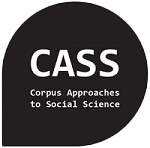-
TLC and innovation in language testing
One of the objectives of Trinity College London investing in the Trinity Lancaster Spoken Corpus has been to share findings with the language assessment community. The corpus allows us to develop an innovative approach to validating test constructs and offers a window into the exam room so we can see how test takers utilise their…
-
Trinity oral test corpus: The first hurdle
At Trinity we are wildly excited – yes, wildly – to finally have our corpus project set up with CASS. It’s a unique opportunity to create a learner corpus of English based on some fairly free flowing L2 language which is not too constrained by the testing context. All Trinity oral tests are recorded and…
Search A Keyword
CASS Briefings

CASS: Briefings is a series of short, quick reads on the work being done at the ESRC/CASS research centre at Lancaster University, UK.
Recent Post
Tags
amanda potts brazil claire hardaker elena semino islam Islamophobia learner language metaphor metaphor in end of life care paul baker spoken BNC2014 tony mcenery Trinity Lancaster Spoken Learner Corpus trolling twitter
Categories
- Ambassadors
- Anatomy of a troll
- Applications of corpus linguistics
- Big data media analysis and the representation of urban violence in Brazil
- Blogs
- BNC2014
- Call for Papers
- CASS Affiliated Projects
- CASS Briefing
- CFIE
- Challenge Panel
- Changing Climates
- Comparable and Parallel Corpus Approaches to the Third Code
- Distressed Communities
- DOOM
- Events
- General
- Hate Speech
- Healthcare
- iCourts
- Jobs
- L2 language corpora
- Lancs Box
- learner corpora
- MA in Corpus linguistics
- Maritime Security and Piracy Discourses
- Media
- MELC
- MOOC
- News
- Newspapers
- Newspapers poverty and long-term change
- Post Event Summaries
- Research
- Spatial Humanities
- Spoken BNC2014
- Trinity
- Uncategorized
- Understanding Corporate Communications
- Urban violence
